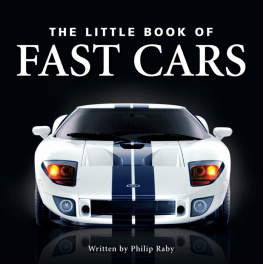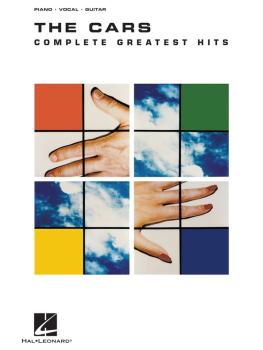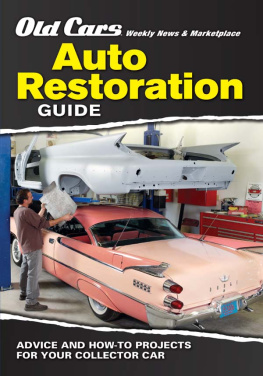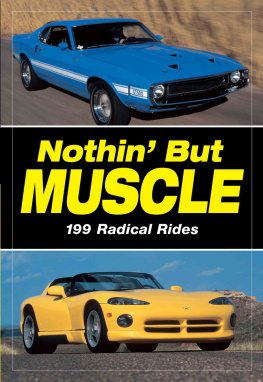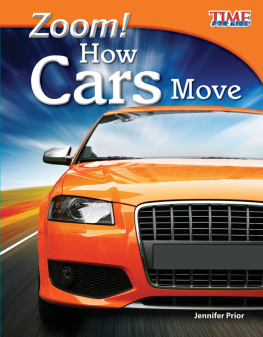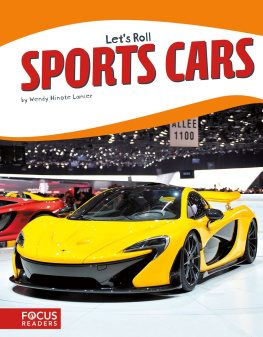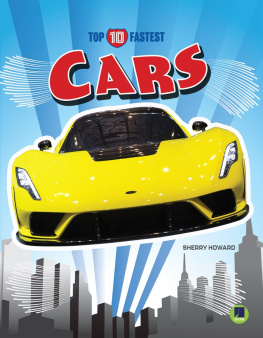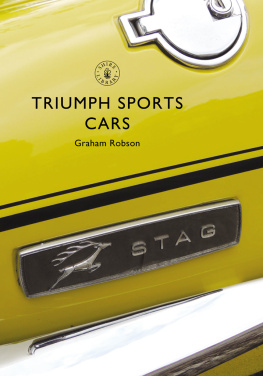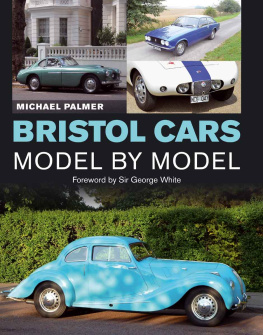THE LITTLE BOOK OF
FAST CARS
Written by Philip Raby
This edition first published in the UK in 2006
by G2 Rights
www.g2ent.co.uk
G2 Rights 2014
Publishers Jules Gammond and Edward Adams
All rights reserved. No part of this work may be reproduced or utilised in any form or by any means, electronic or mechanical, including photocopying, recording or by any information storage and retrieval system, without prior written permission of the publisher.
ISBN 978-1-905009-40-4
eISBN 978-1-782819-49-3

Contents
Introduction
WHAT IS THE DEFINITION OF A fast car? These days, when even a modest family saloon can drive at over 100mph, you could argue that all cars are fast. But family saloons are also rather dull. So I like to think of fast cars as those that have been designed with the sole purpose of going fast and being fun to drive.
This thinking is nothing new. When the first motorcars were preceded by a bloke with a red flag, people were already getting excited by the prospect of driving fast.
Those first rear-engined machines only chugged along at speeds of around 10mph, but by 1901, Daimler had produced a 60bhp Mercedes that was capable of 60mph and is now considered to have been the worlds first sports car.
And things just got better from then onwards, with more and more manufacturers jumping on the power bandwagon.
By the 1980s, the race was on to produce a 200mph sportscar, and in 1987 Ferraris F40 hit 201mph and the magical figure was finally broken.
As the 1990s went on, the 200mph-plus supercar became almost the norm, so McLaren had to pull out all the stops to come up with something special. And it did just that with the F1 of 1993. Not only could this reach a previously unheard of 240mph, it was also smaller, lighter and more nimble than most other supercars.

This 1903 60bhp Mercedes had its engine at the front driving the rear wheels. It set the tone for fast cars for years to come
However, to reach such heady speeds cost a lot of money. Sensibly, perhaps, other manufacturers contented themselves with cars that had a top speed of close to 200mph, and concentrated instead on making machines that drove and handled superbly at rather more realistic speeds.
Until, that is, the Bugatti Veyron came along. With 1000bhp on tap, this had a top speed of no less than 253mph and a 0-60mph time of just 2.9 seconds less than the time it took you to read this sentence! Of course, the critics shook their heads, asking what was the use of producing a car capable of such speeds, when most countries dont even allow you to drive at 100mph.
But that is missing the point. The human race has always strived to improve itself. If it hadnt, wed still be sitting in caves wondering how to make fire. And if the motorcar hadnt been allowed to develop, it would still be chugging along behind a man waving a red flag.
So, whats next? Will there ever be a road car better than the Veyron? A car capable of even greater speeds? I sincerely hope so, because it will be a sad day, indeed, when mankind stops pushing the boundaries yet further. And, remember, the benefits of producing ultra-fast cars have always filtered down into more mainstream machinery. Which is why the humble family saloon can now drive at over 100mph.
So, fast cars are an important part of our lives. Over the following pages are sixty of some of the most interesting, influential and exciting cars which were built for the sole purpose of going at high speed. Its very much a personal choice I could easily have included twice the number and Im sorry if your personal favourite isnt there. Enjoy!
Philip Raby
Aston Martin DB5
1964 United Kingdom
THE ASTON MARTIN DB5 IS ONE OF the most famous cars of all time for the simple reason Sean Connery, as James Bond, drove one in the films Goldfinger and Thunderball, in the early 1960s.
Author Ian Fleming had Bond driving an earlier DB MkIII in the novel of Goldfinger, but when the film makers approached Aston Martin for a car, they were offered the prototype of the about-to-be-released DB5, and so a legend was born.
HOW TO SPOT
Smooth two-door coupe with headlamps behind streamlined plastic cowls. Long rear overhang, and traditional Aston Martin grille and side strakes.
The DB5 was an evolution of the essentially similar DB4, but with covered headlamps (although these did appear briefly on the DB4 Vantage), a more powerful 4.0-litre engine and on all but the very early examples a five-speed gearbox.
The straight-six engine was endowed with three SU carburettors and produced 282bhp enough to propel the car to a top speed of 148mph. However, a rare and more powerful Vantage version was fed by triple Webers and pumped out no less than 314bhp. Also rare was a soft-top version which, unlike some Astons, was not badged Volante. The rarest DB5 of all, though, was a shooting brake version built for company boss David Brown to carry his dogs in!

The DB5 in rare drophead form was a seriously good-looking car
The James Bond car came with many unique extras, including front and rear rams, machine guns, tyre slashers, bullet-proof screen, radar and telephone, smoke screen, revolving numberplates and not least a passenger ejector seat. The films gave Aston Martin excellent publicity and made the DB5 the car that young boys and grown men alike aspired to own. Bond was cool, so Astons were cool. Indeed, the effects of those early films remains to this day; surely anyone who buys an Aston Martin, if theyre honest, must have been influenced by the James Bond connection.
SPECIFICATION
Capacity: 3995cc
Cylinders: straight-six
Compression ratio: 8.0:1
Maximum power: 282bhp at 5500rpm
Maximum torque: 390Nm at 3850rpm
Gearbox: Five-speed manual
Length: 4572mm
Width: 1676mm
Weight: 1564kg
0-60mph: 8.6 seconds
Maximum speed: 142mph

The DB5s 4.0-litre, straight-six engine. Note the three SU carburettors
Of course, real DB5s didnt have such exotic accessories and, even putting aside the Bond connection, it was a seriously good-looking car with breathtaking performance for its time.
However, even though its the most famous of all Aston Martins, the DB5 was in production for only two years, during which time around 1000 examples were built, with just 65 of them being the more powerful Vantage variant. Its replacement was the DB6 of 1966, which had a number of improvements, the most noticeable being a squared-off tail to improve the aerodynamics. The DB6 was built until 1971.
Aston Martin Lagonda
1978 United Kingdom
IN THE 1970S, IF YOU WANTED A large, luxury car you bought a staid and regal Rolls Royce. But then Aston Martin came up with a radical alternative the Lagonda was like nothing else on the road.
Designed by William Towns, the Lagonda had razor-sharp lines, with Towns trademark wedge shape led by a rather incongruous radiator grille. At over 17 feet long, the Lagonda was an imposing machine that turned heads wherever it went.

